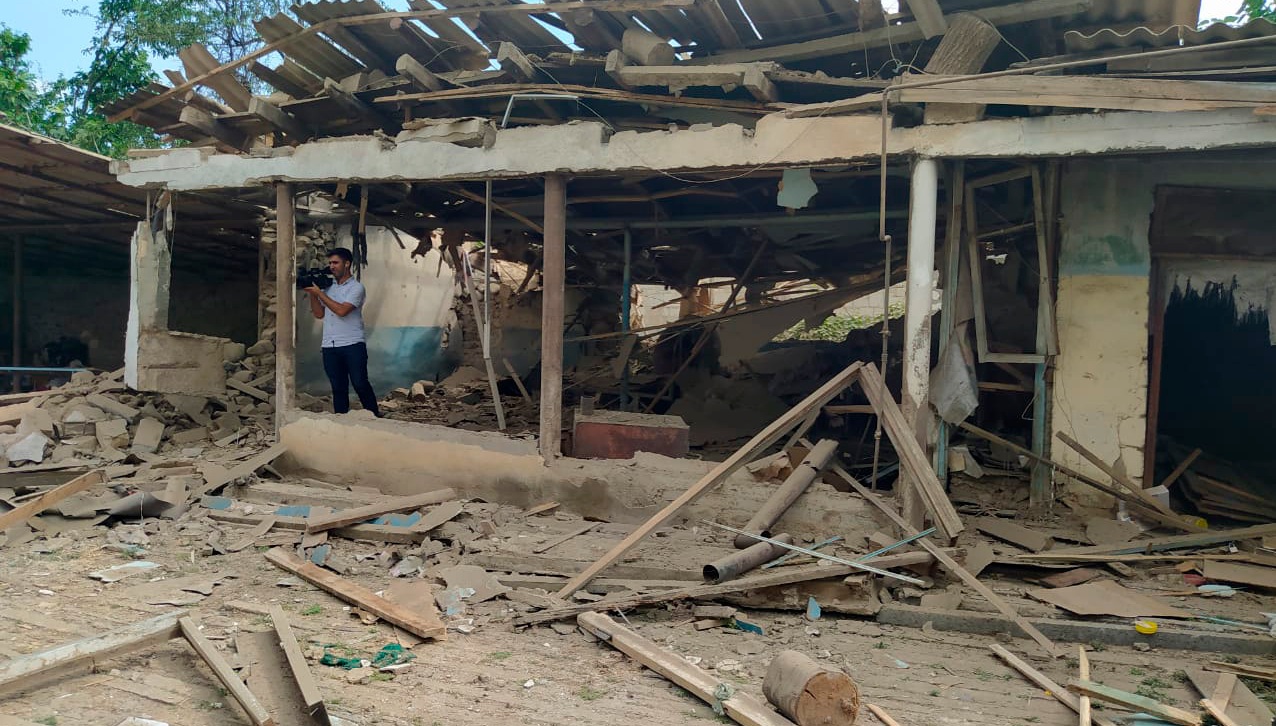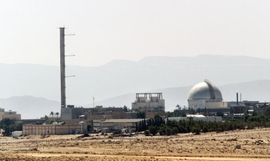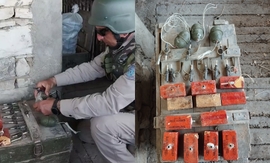The armed forces of Armenia have continued to target civilian settlements in Azerbaijan during attacks on Azerbaijani positions stationed on the border in the western Tovuz district.
The Defense Ministry of Azerbaijan reported on Thursday that the Aghdam, Dondar Gushchu and Vahidli villages in Tovuz have been hit by large caliber rifles and mortars early in the morning on July 16. Although no casualties were reported, several houses were seriously damaged by heavy fire.
The latest attacks by Armenian troops on the civilian settlements in Azerbaijan began on July 13, when a mortar fire that hit a house's courtyard killed one resident in the Aghdam village of Tovuz. Windows and walls of several other houses were destroyed as a result of the attack.
Tensions between Armenia and Azerbaijan soared on July 12 after Armenia's troops opened artillery fire on the border positions of the Azerbaijani army. The ongoing clashes caused deaths on both sides. Azerbaijani troops lost 11 servicemen, including one general and one colonel.
Armenian authorities confirmed four deaths, including one major and one captain throughout the armed clashes. Twenty more have been injured, according to Yerevan's Defense Ministry. However, social media users in the country claimed that the government is deliberately hiding real numbers, which they believe is more than 30, of which seven are said to be officers.
Meanwhile, spokesperson to the Defense Ministry of Azerbaijan Vagif Dargahli said that the Armenian forces shot neither a UAV nor a tank of the Azerbaijani army as he commented on the reports in the Armenian media. He went on to add that Azerbaijani troops downed an X-55 tactical UAV of the enemy while it was conducting a reconnaissance flight over Azerbaijani positions stationed along the border.
The border clashes come nearly three decades after the two South Caucasus nations fought a full-scale war in the early 1990s. Motives for the war were Armenia's illegal claims for internationally recognized Azerbaijani territories that accommodated a partial Armenian population side by side indigenous Azerbaijanis. To realize its ploy, Armenia launched a full-blown military campaign against Azerbaijan in 1991.
The full-scale war that lasted until a ceasefire in 1994 resulted in Armenia occupying 20 percent of Azerbaijan's sovereign territory, including the entire Nagorno-Karabakh region and seven surrounding districts. Armenian troops killed over 30,000 ethnic Azerbaijanis, including 613 that was massacred in the city of Khojaly. As a result of the brutal ethnic cleansing policy, more than 1 million Azerbaijanis have become refugees and internally displaced persons.
In 1993, the United Nations Security Council adopted four resolutions demanding the immediate withdrawal of the occupying forces from Azerbaijani lands and return of internally displaced Azerbaijanis to their ancestral lands. All four legally binding documents go unfulfilled by Armenia to date.
Amidst the ongoing skirmishes on the Armenia-Azerbaijan border, the Air Force Commander of the Azerbaijan Armed Forces, Ramiz Tahirov paid a one-day working visit to Turkey where he met with Turkish Defense Minister Hulusi Akar and other top military officials of the country. Minister Akar pledged full support to Azerbaijan for repelling any attack on the country's territorial integrity.
Turkey's Foreign Ministry earlier blamed Armenia for blocking efforts to resolve the conflict and ensure peace in the South Caucasus by illegally occupying Azerbaijani lands. The ministry called on the government of Yerevan "to come to senses and comprehend, as soon as possible, that they should be part of the solutions, not problems, in the South Caucasus."







 The Mine Action Agency of Azerbaijan (ANAMA) reported on Thursday the discovery of a significant amount of explosives in the Khojavand district of ...
The Mine Action Agency of Azerbaijan (ANAMA) reported on Thursday the discovery of a significant amount of explosives in the Khojavand district of ...
 Iran has refuted reports of alleged damage to Shimon Peres Negev Nuclear Research Centre located southeast of Dimona, Israel, during the recent air...
Iran has refuted reports of alleged damage to Shimon Peres Negev Nuclear Research Centre located southeast of Dimona, Israel, during the recent air...
 Iran’s Foreign Minister, Hossein Amir-Abdollahian, has labeled a foiled Israeli drone attack in certain parts of the country as a "failure" for Isr...
Iran’s Foreign Minister, Hossein Amir-Abdollahian, has labeled a foiled Israeli drone attack in certain parts of the country as a "failure" for Isr...



